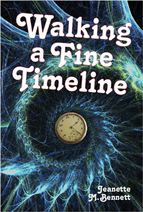I am currently in Bangkok, Siam. The city has an ancient feel to it, even though it is less than 100 years old. I decided to come here in November, the cool dry season, and yet it is still hot and muggy. Siam is definitely in the tropics.
Most people in Siam are Tai, originally coming from southwestern China in the first millennia. They came into Indochina during the Khmer Empire that was influenced by Indian culture. Hindu, then Buddhism, came from Indian missionaries.
The first kingdom considered Tai was the Sukhothai kingdom, founded in 1238. The Buddhist King Ramkamhaeng invented the Thai script, promoted free trade and saw himself as a benevolent father figure. He also united the various Thai city states into an Empire.
 |
| 1686 French map of Siam |
Father figure wasn’t enough for the Ayutthaya kings. They considered themselves the avatars of the god Vishnu. (Yes, I know Vishnu is a Hindu god. Apparently the Tai’s converted him to Buddhism.) He had absolute power, honored and worshipped by his subjects.
In 1767 Burma decided to take revenge for a defeat they had suffered 200 years before. They razed Ayutthaya to the ground and most of the inhabitants butchered. One of those to escape was Taksin. He drove the Burmese out and established a new kingdom at Thonburi, further down the river in 1768. Taksin then spent the next 14 years putting the country back together both physically, politically and culturally. He did a good job until 1782.
I have read a half a dozen accounts as to what happened to Taksin. Some say he went mad and decided he was Buddha. Vishnu is one thing, but this was blasphemy! He was duly executed. Others say he became a monk and disappeared. One account says he faked his death to get out of a debt with China. Or maybe there was a bloody coup. Whatever happened, Taksin disappeared and General Chao Phraya Chakri took over.
 |
| Map of Bangkok in the 1860s |
Chakri took the name King Rama the first and moved the capitol across the Chao Phraya River and named it Bangkok. Rama IV, better known as Mongkut, is the current ruler (in 1863, anyway.)
And that is an oversimplified history of Siam. Even the name Siam is confusing. It appears to have been foisted upon the Tai by foreigners, and they have just come to accept it. The name is believed to come from Sanskrit and means “dark” or “brown” in reference to the complexion of the Tai who are the color of black tea with a spot of cream.
Speaking of the Tai, they tend to be slim, medium build, almond eyed and rather handsome. They are quiet and gentle. Yelling at anyone is considered very rude (unless you are warning them to get out of the way of a charging elephant.) Spreading rumors and lying are not just rude, but rate up there with stealing. They do their best to live up to the Buddhist beliefs of tolerance and compassion. Foreigners are accepted as long as they don’t try to take over the country.
Siam is at a crossroads. No longer having to contend with just her neighbors, Britain and France are dividing up IndoChina amongst themselves. So far Siam has managed to remain independent, and will be the only Southeastern nation to avoid colonization.
 |
| King Mongkut |
In the mean time I want to record as much as I can of this fascinating land before it becomes Westernized. Canals are being dug, criss-crossing the city with watery roads. Bangkok is called the Venice of the Orient. People get about in canoes, even selling produce out of their boats.
I’m also quickly becoming addicted to cha-yen. It’s strong black tea with orange blossoms, star anise and crushed tamarind seed added. It’s a bit like Siamese culture--throw together a bunch stuff that doesn’t seem to belong together and create something unique and wonderful.





No comments:
Post a Comment
Due to bots sticking ads into the comments I am now forced to moderate. Differing opinions are welcomed. This is history, which is the surviving written record, which may or may not be accurate. I will even allow comments pushing other books or websites as long as they are relevant.